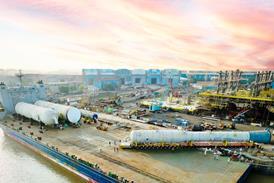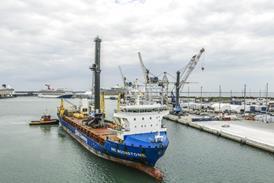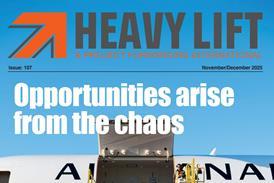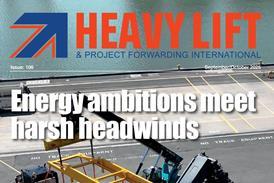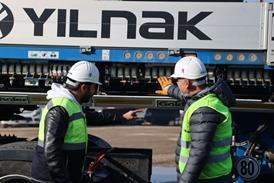The Heavy Lift Group’s (THLG) 72nd international conference took place in The Hague, the Netherlands during May, bringing together professionals from over 50 countries for talks on industry best practice, innovation and the future of the heavy lift and project cargo sectors.

A key topic of discussion was the offshore sector and how logisticians can adapt to the rapidly changing demands of the renewables industry. The Future of Offshore Logistics panel was opened by THLG president and Cosmatos Group ceo Elisabeth Cosmatos; moderator Emre Eldener of Kita Logistics was joined by Björn Wittek (Rhenus Offshore Logistics), Thomas Parlow (TP Shipping) and Ilse Rodewijk (AlbatrosDigital).
Parlow drew a distinction between the drivers acting on the offshore supply vessel (OSV) market and project cargo vessels, highlighting the significance of the spot market for OSVs, where seasonal demand and on-day weather conditions contribute strongly to rates swings. With project cargo vessels generally fixed further in advance, rates were likely to be less volatile, creating a different set of planning challenges, financial risks and hedging strategies, he said.
Wittek brought the structural transformation under way in the North Sea into focus, where a region traditionally concentrating on oil and gas operations is increasingly committed to large-scale offshore wind projects. The shift offered a key opportunity to expand global supply chains, he said, while also introducing new logistical complexity, where larger structures are installed in harsher environments. Regional opportunities were also a key driver for developing new vessels dedicated to offshore wind construction and support, according to Wittek.
However, the rise of renewable energy is also a global trend and participants broadened discussions to consider the opportunities and challenges involved in serving new geographies with entirely different logistical frameworks. Developments in deeper and more remote waters, and larger and heavier turbine components highlighted the need for special purpose vessels to transport, install and maintain assets was also a global matter, panelists observed.
The scale and speed of offshore wind developments are also calling for greater precision in operational planning to ensure flexibility and resilience in the supply chain. Weather is a major challenge, especially in remote and harsh marine environments where downtime can be costly.
Digital technologies – such as AI, simulation tools, and performance modelling – are playing a critical role in making offshore logistics safer and more efficient, according to Rodewijk of AlbatrossDigital. She underscored the importance of real-time weather forecasting and weather routing optimisation in reducing fuel use and managing risk, going on to predict a future of intuitive tools that empower logistics specialists to identify best vessel operating strategies.
Summing up, Eldener observed how, in a globalised supply chain, the renewables infrastructure and its growing need for dedicated services create a unique opportunity to leverage synergies between human expertise and advanced digital systems in a specialised segment of offshore logistics.

